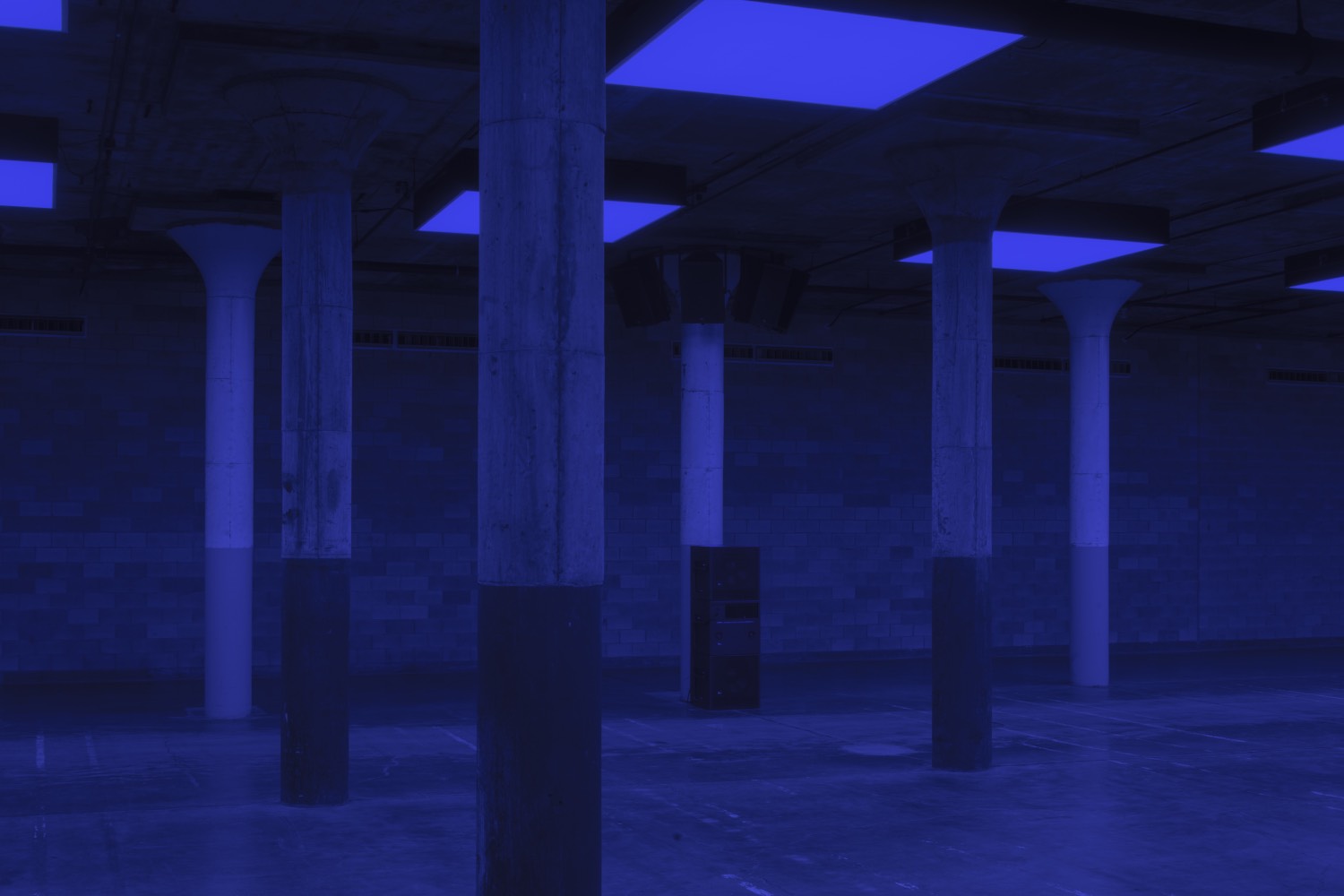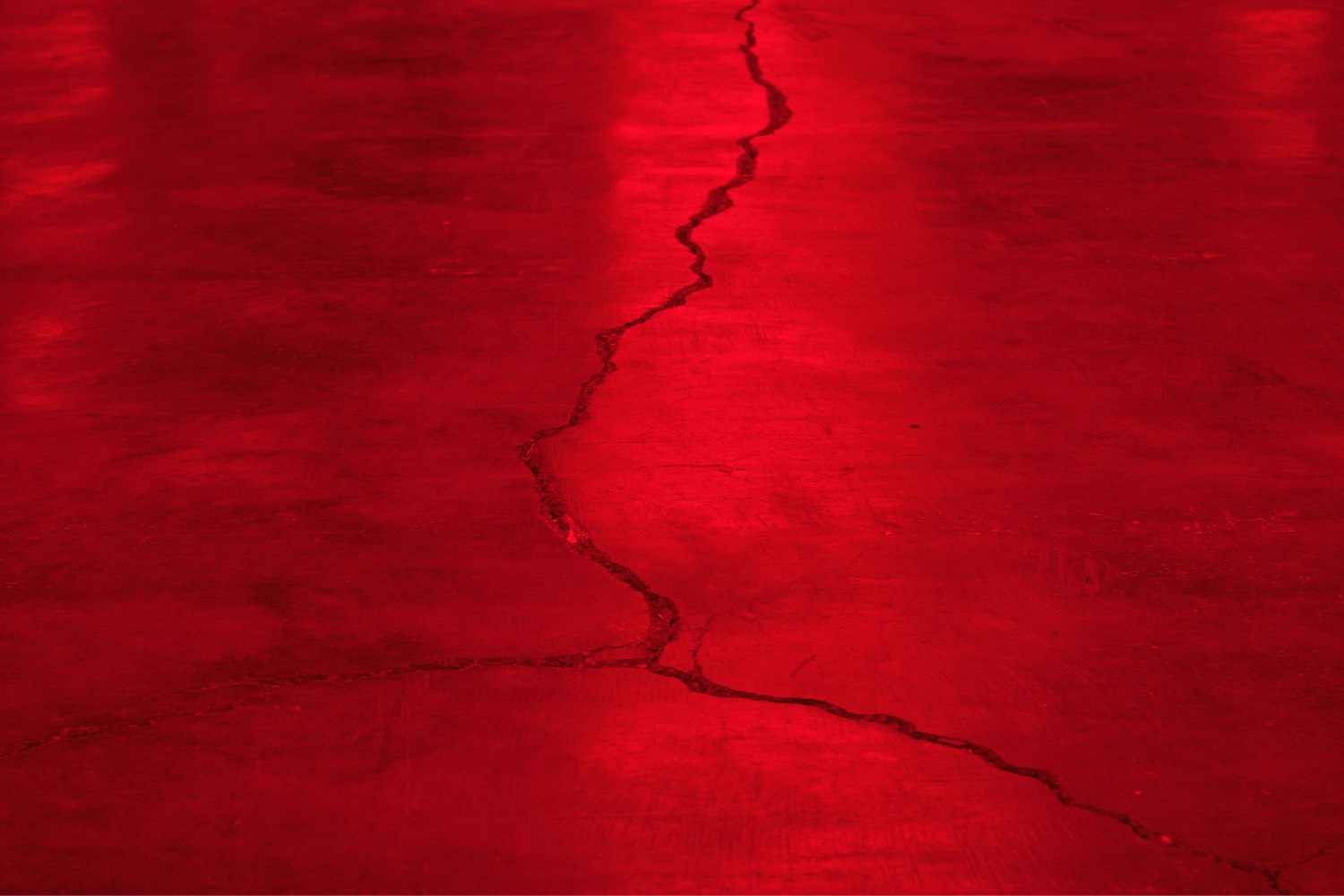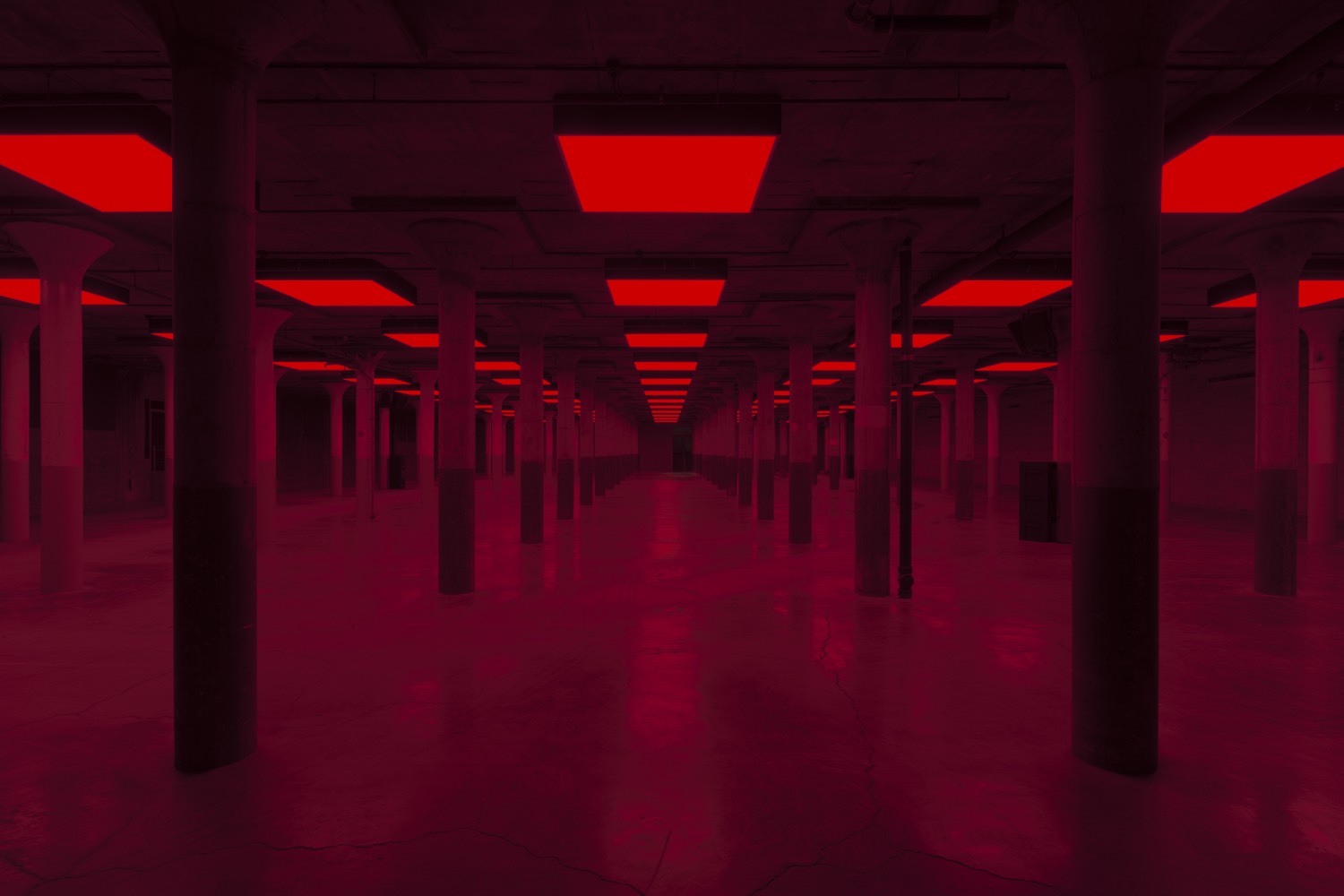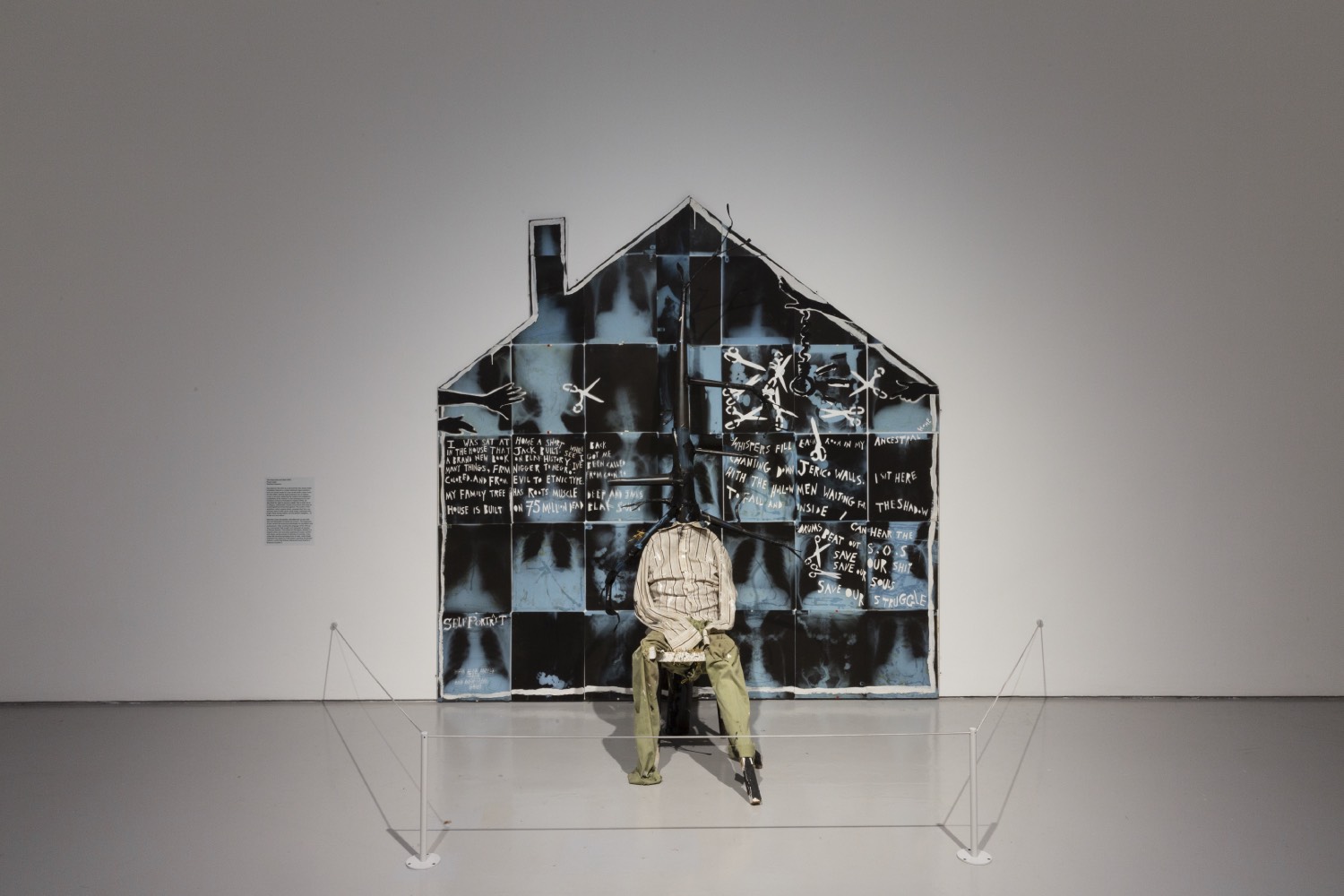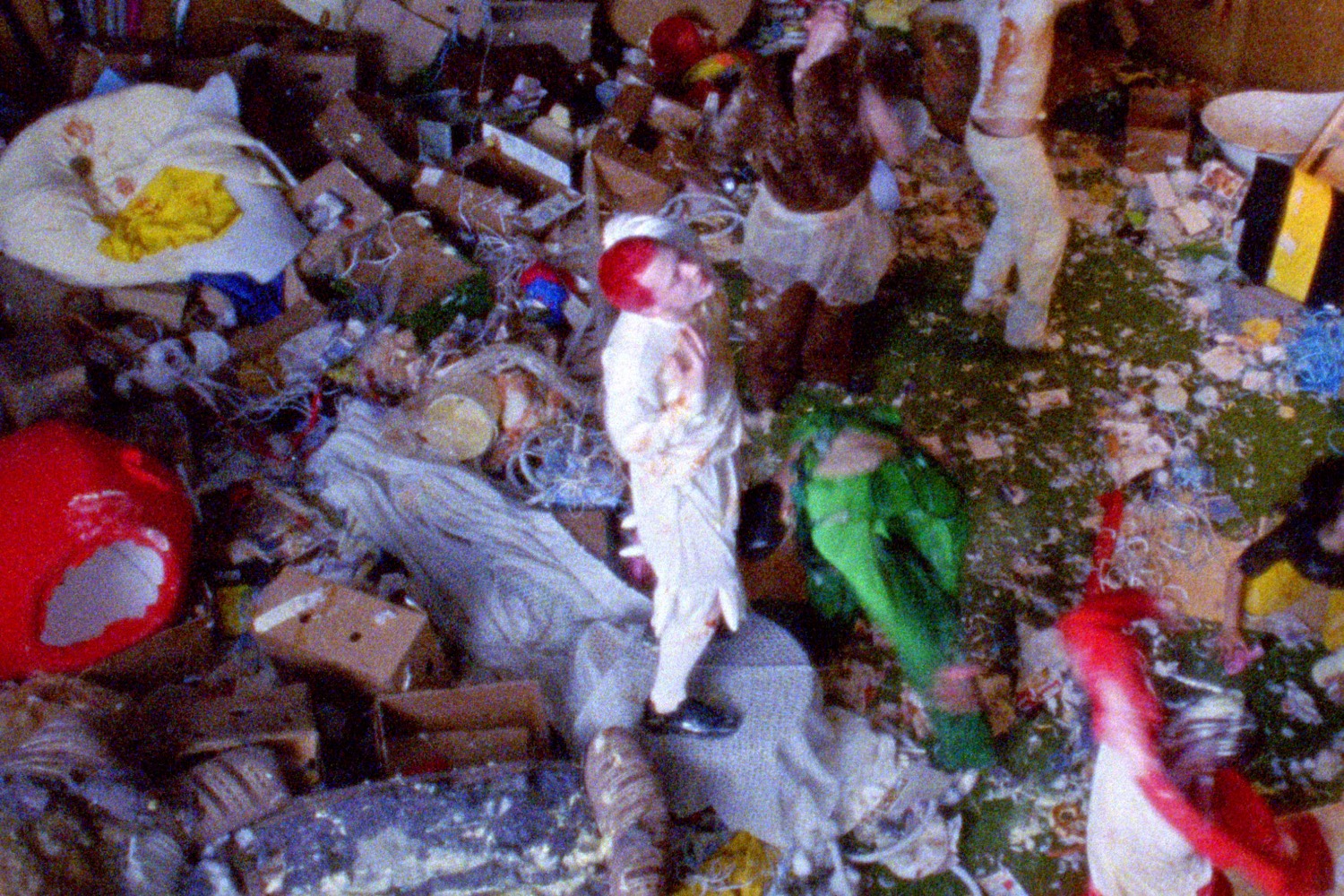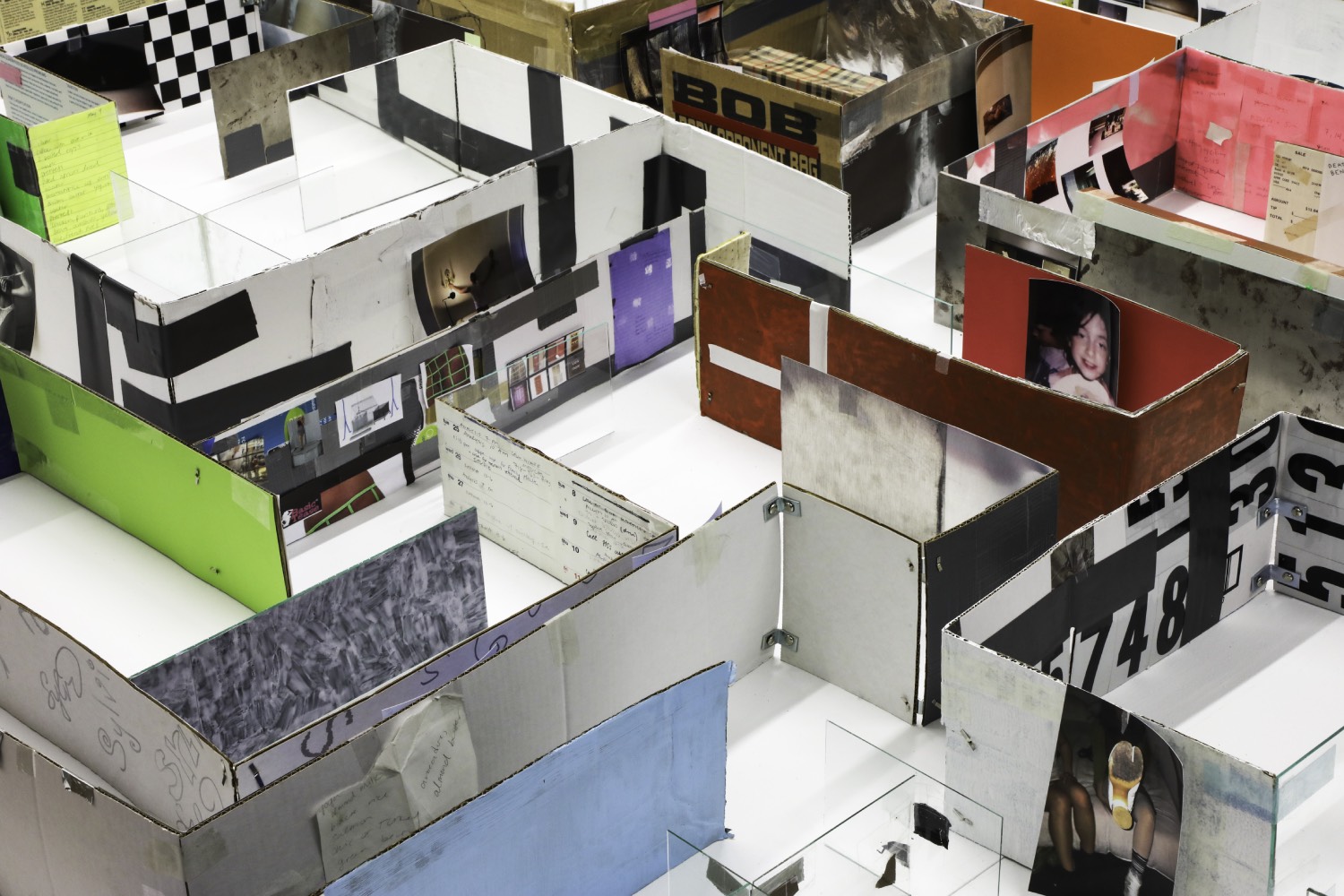The exhibition brochure for Steve McQueen’s Bass (2024), which occupies Dia:Beacon’s 30,000-square-foot basement with sixty ceiling-mounted LED lightboxes and three stacks of speakers, is careful to specify that the piece incorporates “no moving-image component.” Strictly speaking, this is true. The two components of a typical film or video — light and sound — are disaggregated from each other: a track improvised in the space by bassists Marcus Miller, Meshell Ndegeocello, Aston Barrett Jr., Mamadou Kouyaté, and Laura-Simone Martin reverberates, aches, surges, simmers, and tails off, only to pick up again as the lights overhead move almost imperceptibly through the full spectrum of visible light. In full, the sound lasts 189 minutes and the light around forty, meaning that Bass never plays the same way twice; because of their different lengths, light and sound cycle separately, never quite matching each other.
What, then, has McQueen created? Some have dubbed Bass an “immersive environment,” an Infinity Room for the New York day-tripping set. However, it seems to me that McQueen is up to something different. A room designed by Yayoi Kusama or Doug Wheeler acts as a surround in which viewers retain enough individuality and agency to be entertained, to amble about snapping photos. Visiting works like these reminds me of teenage trips to the local outlet mall: walking from Abercrombie & Fitch, with its pumping music and heavy musk, to Auntie Anne’s, with its florescent glare and distinct buttery smell — two “immersive environments” in which I retained enough individuality and agency to be able to decide on a product to buy and to hand over a wad of waitressing cash.
Bass wraps the entire basement, including whatever bodies are currently within it, into a sort of sonic monad. Viewers lose their status as such, as the work’s immense sound literally moves them. When I sat on a bench and rested my head against the museum’s concrete walls, I felt the building vibrate, and my body along with it. I recalled a news story I’d read when I was young, about a bedridden man who’d sat on his couch so long that his skin fused with its fabric: this is the level of sensory “immersion” — or, more properly, dissolving and synthesis — at work in the show. I wasn’t watching a moving image: I had become part of a moving image. The sound folded me in, and in doing so, obliterated any sense I had of myself as a discrete entity.
If Bass’s sound shook and dissolved me, its lights set the mood for my dissolution. Sometimes, the moving image in which I swam was entirely desaturated by the somber dim of a pale lilac; other times, it was inflected by the neon blue of a neo-noir. The light, though, was secondary in effect to the sound: when the bass track was pulsing or wafting, bodies moved through the space as if transfixed, nearly zombified; in the rare moments when the track stopped, the space was evacuated of its monadic quality and we gallerygoers were thrown from the moving image into which we’d been lured. The air felt both suffocating and too thin, and myself and the other bodies in the space found ourselves viewers again, self-consciously attempting to find our way back to the social codes of the museum. Should we be looking at something? Should we be thinking of smart quips to say to each other?
Dia:Beacon’s massive building was built in 1929 as a Nabisco box-printing factory; to help cut electricity costs, it was designed to be illuminated by skylights. Only the basement, vacant save for seventy-eight evenly spaced concrete columns, lacks this surfeit of natural light. Perhaps because of this, or perhaps because I couldn’t help but read McQueen’s work in the context of work by other Dia-supported artists like James Turrell, Bass’s lightboxes felt like skylights onto some post-apocalyptic world, or else the panels of a glass-bottom boat, with us gallerygoers as the underwater residents of its aquatic environment. Dia:Beacon is situated next to the Hudson River, which leads to the Atlantic, and the exhibition is quite literally subterranean, resonant with the sounds of the African Diaspora. For some viewers, the apocalypse might have been signified most when the light cycled watery red or sickly yellow, suggesting a Hollywood-style apocalypse still to come. For others, though, the apocalypse is in ghostly bodies moving slowly in a resonant sea of oceanic blue: an apocalypse that is lived continuously in the aftermath of the transatlantic slave trade. Bass is McQueen’s most abstract work yet, to be sure. Its immersion, though, is not into an Instagrammable environment or an on-the-nose reenactment of the horrors of history. Instead, it asks its inhabitants to reside in the throbs, hollows, and surges of a life lived in the wake.1

